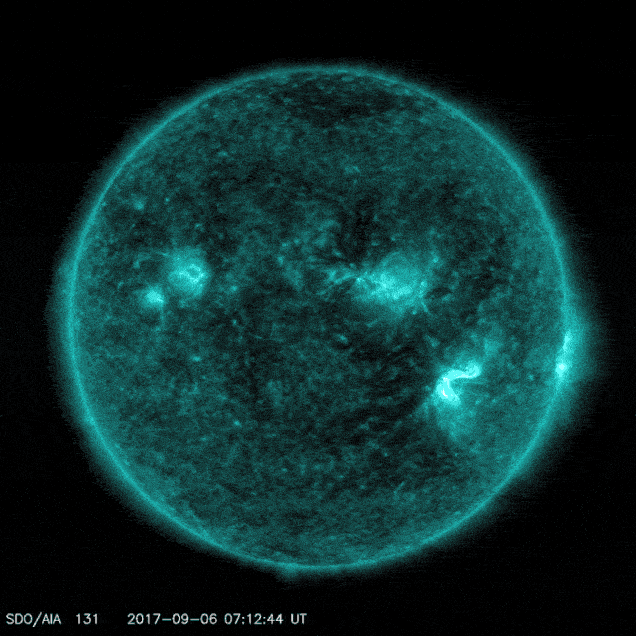MessageToEagle.com – The Sun’s largest solar flare in more than 12 years – and the eighth largest since modern records began in 1996 – has been captured in high detail by a team of researchers from the University of Sheffield and Queen’s University Belfast.
This historical event was observed – in extremely high detail – by astronomers using the Swedish Solar Telescope in La Palma.
The huge burst of radiation, which was not harmful to humans due to the Earth’s protective atmosphere and distance from the Sun, occurred unexpectedly on Wednesday 6 September 2017. The flare was one of three X-category flares – the largest type of flare – observed over 48 hour period.

The largest X-class flare occurred at 13:00 GMT and was measured to have an energy level of X9.3 (where X9 is nine times more powerful than X1).
One of the most difficult aspects of flare observation using ground-based telescopes is the short time-scales over which flares evolve. X-class flares can form and reach their peak intensities in little over five minutes, meaning observers, who only see a small part of the sun at any one moment, must act fast to ensure they catch the crucial opening moments of the flares evolution.

“It’s very unusual to observe the opening minutes of a flare’s life. We can only observe about 1/250th of the solar surface at any one time using the Swedish Solar Telescope, so to be in the right place at the right time requires a lot of luck,” said Dr Chris Nelson from the Solar Physics and Space Plasma Research Centre (SP2RC)
To observe the rise phases of three X-classes over two days is just unheard of.”
“The Sun is currently in what we call solar minimum. The number of Active Regions, where flares occur, is low, so to have X-class flares so close together is very usual. These observations can tell us how and why these flares formed so we can better predict them in the future,” added Dr Aaron Reid, a research fellow at at Queen’s University Belfast’s Astrophysics Research Centre.
Using the data collected during this observation, researchers will be able to probe the conditions in the solar atmosphere as these powerful events are formed, allowing more accurate predictions about when and where X-class flares might occur in the future.
Full article –here.
MessageToEagle.com
Expand for referencesReferences:






